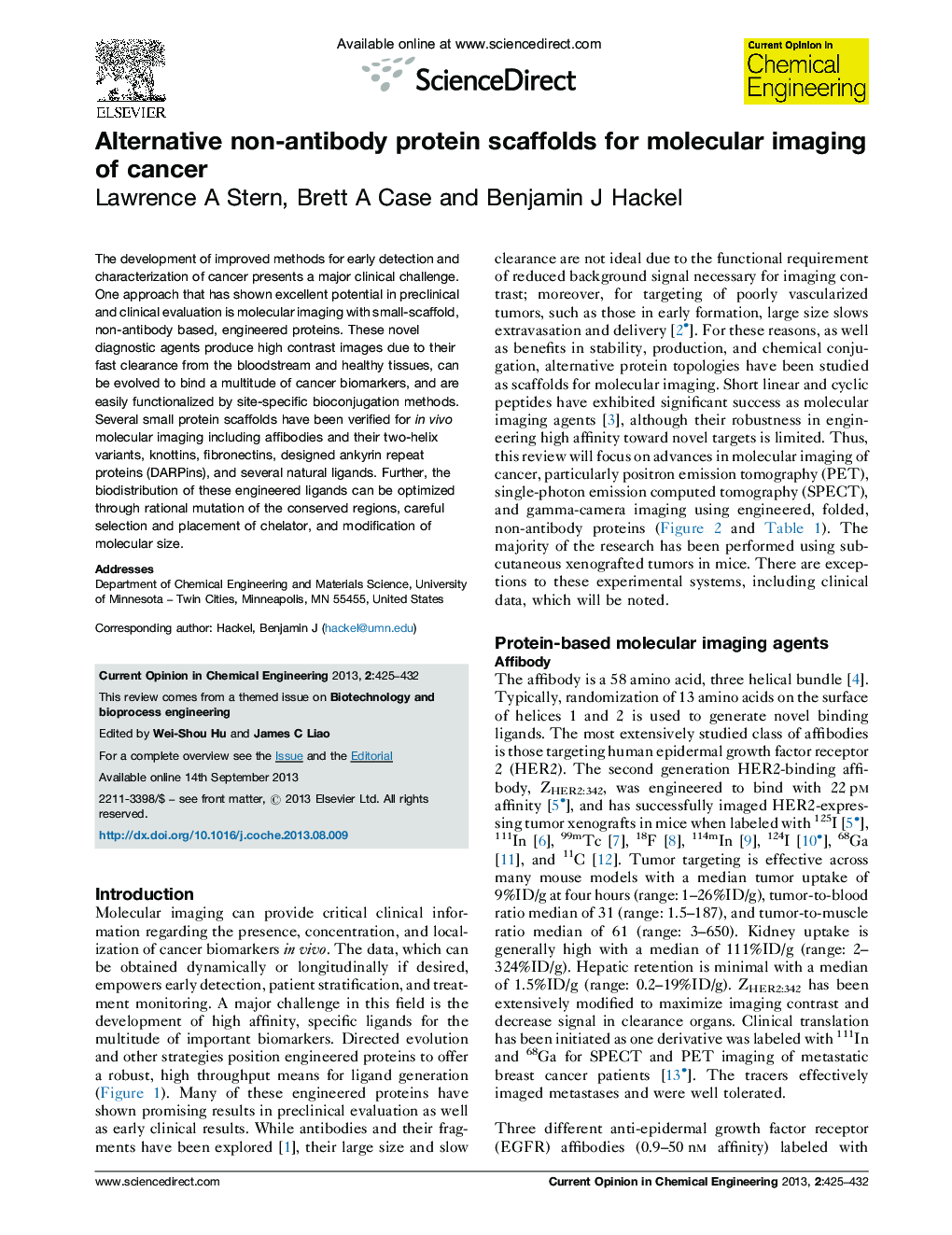| Article ID | Journal | Published Year | Pages | File Type |
|---|---|---|---|---|
| 174464 | Current Opinion in Chemical Engineering | 2013 | 8 Pages |
•Molecular imaging is a valuable clinical tool for cancer detection and treatment.•Non-antibody protein scaffolds are an effective source of molecular imaging agents.•Affibodies, knottins, fibronectins, and DARPins have imaged many cancer biomarkers.•Ligand biophysical properties can be modulated to optimize in vivo performance.
The development of improved methods for early detection and characterization of cancer presents a major clinical challenge. One approach that has shown excellent potential in preclinical and clinical evaluation is molecular imaging with small-scaffold, non-antibody based, engineered proteins. These novel diagnostic agents produce high contrast images due to their fast clearance from the bloodstream and healthy tissues, can be evolved to bind a multitude of cancer biomarkers, and are easily functionalized by site-specific bioconjugation methods. Several small protein scaffolds have been verified for in vivo molecular imaging including affibodies and their two-helix variants, knottins, fibronectins, designed ankyrin repeat proteins (DARPins), and several natural ligands. Further, the biodistribution of these engineered ligands can be optimized through rational mutation of the conserved regions, careful selection and placement of chelator, and modification of molecular size.
Graphical abstractFigure optionsDownload full-size imageDownload as PowerPoint slide
